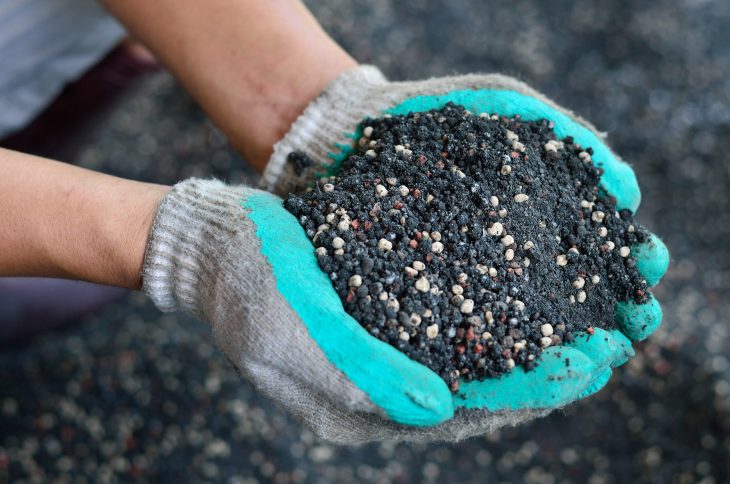The fertilizer outlook for Latin America, led mainly by Brazil and Argentina, has its challenges.
These nations produce little fertilizer domestically and must depend on imports. These leave them at the mercy of world-wide events. Each country also has other issues that affect supply, demand and price of nutrients.
In a presentation about the outlook for Latin America at the 2016 Fertilizer Outlook and Technology Conference held in Fort Lauderdale, Florida, recently, Blake Hurtik, editor for Argus FMB, touched on some of these issues.
Little domestic production
Latin America has limited domestic fertilizer production, and it is extremely reliant on fertilizer imports from across the globe, Hurtik said.
The ammonia capacity for the region, which consists of Mexico, Central America and South America, is only about 13 million metric tons (mmt), with urea capacity at about 8.4 mmt. Phosphorus production is roughly 4.5 mmt a year with just 1.5 mmt a year going towards MAP production. Potash production is extremely minor with small potash production facilities in both Chile and Brazil.
Fertilizer consumption in Latin America is led by Brazil, Mexico and Argentina and has increased from 2012 to 2014, he said.
Total fertilizer consumption (N, P, K) in Brazil has increased from just over 12 mmt in 2012 to 14 mmt in 2014. Mexico went from just under 2 mmt in 2012 to just over 2 mmt in 2014, and Argentina has demand hovering around 1 mmt.
Countries including Venezuela, Chile, Peru, Ecuador, Guatemala, Uruguay and several others all had fertilizer consumption at 1 mmt and under, he said.
Increasing Brazilian demand
With Brazil continuing to expand its expansive growing areas for crops, fertilizer demand has increased in recent years. This trend should continue even with the planted area not expanding as fast in 2017 as it had grown in past years, Hurtik said.
Brazil fertilizer imports rose from just over 6 mmt in 2009 to over 16 mmt in 2014, but imports did tail off in 2015 to only about 13 mmt, Hurtik said. The main reason for the decline was issues with Brazilian credit. From January to October in 2016, imports are at about 12 mmt.
Broken down by nutrient, Brazil had about 4.4 mmt total urea imports in 2014, with 2.8 mmt in 2015 and 2.9 mmt in 2016 through Oct. Total Brazilian MAP imports in 2014 was 3 mmt, 2.3 mmt in 2015 and 2.1 mmt in 2016 through Oct. Total potash imports in 2014 were 9 mmt, in 2015 it was 7.8 mmt and through Oct. of 2016 the number was 7.1 mmt.
“Obviously 2016 is not over yet, but I think fertilizer import numbers into Brazil will be higher in 2016 than in 2015,” Hurtik said.
One of the issues affecting fertilizer in Brazil was volatile truck freight rates with the movement of product from the ports to the country, which can cause price to climb, Hurtik said. While trucking rates decreased in most of 2015, they have increased during 2016. In some cases, freight rates have doubled since the beginning of the calendar year with limited back-hauling available, he said.
“The lack of truck availability is causing a spike in fertilizer prices in Brazil,” he said.
In addition, exchange rate volatility affected the price of imported fertilizer in Brazil. The Brazilian real fell in value against the U.S. dollar during 2016, thus making all U.S. products, including fertilizer, more expensive in the nation.
Hurtik said Brazil’s urea and potash prices are expected to climb in 2017 because of the transportation issues. Other fertilizers, mainly phosphorus, will see prices remain under some pressure.
Another concern in Brazil could be a possible drought in the safrinha. The drought reduced the prior harvest output and drained stocks. While the soybean acreage is expected to remain about the same size, this drought could affect fertilizer demand in the country, he said.
Changes in Argentina
Farther south, big changes in agricultural policy by Argentina’s president Mauricio Macri, elected in late 2015, is already affecting fertilizer usage in the country, Hurtik said.
Specifically, Macri eliminated export taxes for corn and wheat and thus corn planting jumped: Argentine corn production is forecasted to be 26% higher for 2016-17, compared to a year earlier. He also reduced a soybean export tax by 5%, to 30%.
These increases in Argentina’s crop production led to increased fertilizer imports, he said.
Fertilizer imports from January to September in 2016 were considerably higher than the same periods of time in 2014 and 2015.
Urea imports tripled, going from 100,000 metric tons (mt) in both 2014 and 2015, to almost 300,000 mt in 2016. MAP also saw a large increase with imports climbing to over 600,000 mt in 2016, up from 400,000 mt in 2014 and roughly 350 mt in 2015.
Hurtik said the U.S. is benefiting nicely from Argentina’s higher fertilizer import numbers. The U.S. exports to Argentina is picking up, thanks to more imports needed by Argentina, as well as new nitrogen capacity in the U.S.
U.S. nitrogen exports into Argentina have fluctuated in recent years, he said.
In 2012, there were under 200,000 mt exported, which jumped to 450,000 mt in 2013. Then U.S. exports were back down to just over 300,000 mt in 2014, only to climb again this time back to 450,000 mt in 2015. From January to September, 2016, U.S. nitrogen exports were already at nearly 500,000 mt.
“You can clearly see the uptick in U.S. exports, especially in UAN,” Hurtik said.
Source: DTN/The Progressive Farmer



